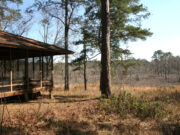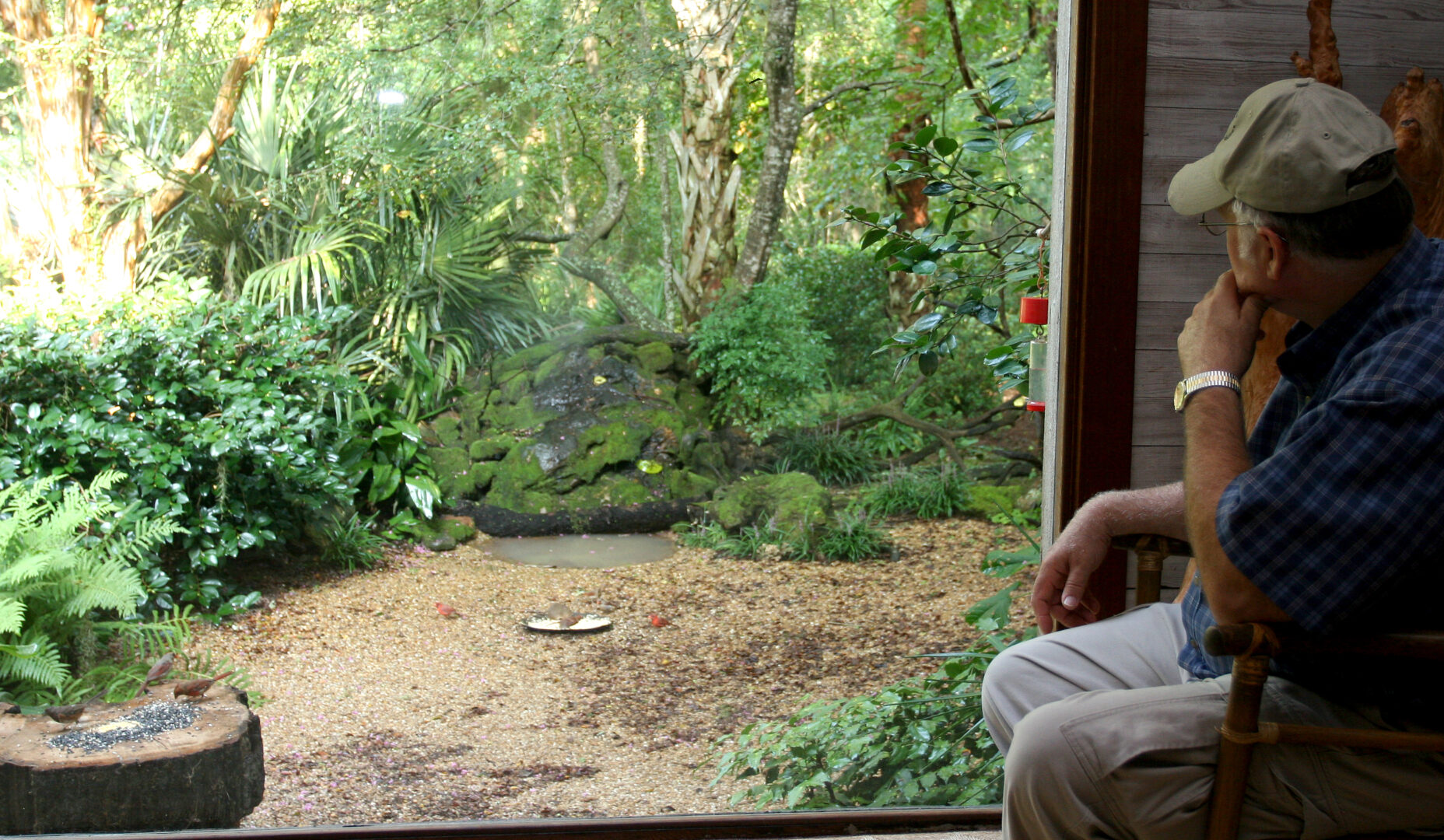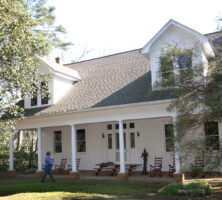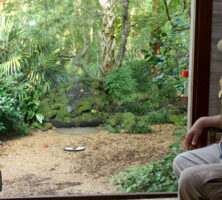Birdsong Nature Center is a model of biodiversity and environmental stewardship in the red hills of southwest Georgia. Located between Thomasville and Tallahassee, Florida, Birdsong offers 565 acres of varied ecological habitats, including twelve miles of maintained trails for birding and hiking.
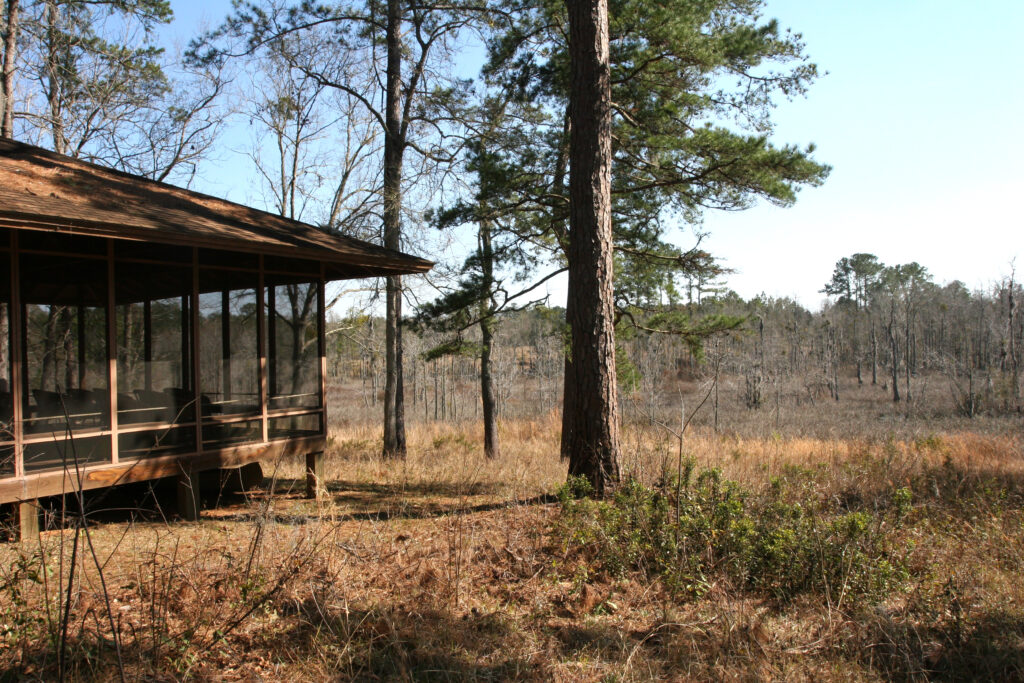
Photograph by Julius F. Ariail Jr.
Birdsong is the living legacy of Ed and Betty Komarek, who purchased the plantation in 1938. In 1934 Herbert L. Stoddard, the famed wildlife manager, hired Ed Komarek, who was then a biology student at the University of Illinois, to aid him in his study of the declining quail population in the red hills. Stoddard’s plantation, Sherwood, adjoined Birdsong Plantation.
With the help of his wife and his brother, Roy, Ed Komarek introduced sound management practices at Birdsong, both by transforming cut-over and depleted land and by devoting acreage to an economically viable cattle farm. Stoddard and the Komareks also hosted many scientists interested in their practices of prescribed burns and wildlife management. Birdsong Nature Center continues the practice of annual prescribed burns over portions of its acreage.
With their founding of Tall Timbers Research Station in 1958, Stoddard and Ed Komarek helped to define the relatively new science of fire ecology. Indeed, many consider Komarek to be the father of fire ecology. Birdsong remains a showcase of a fire-dependent ecology, including viable stands of longleaf pine, wiregrass, and associated wildflowers and wildlife. The center also exemplifies good management of wetlands and of the ecotones that lie between uplands and viable wetlands.
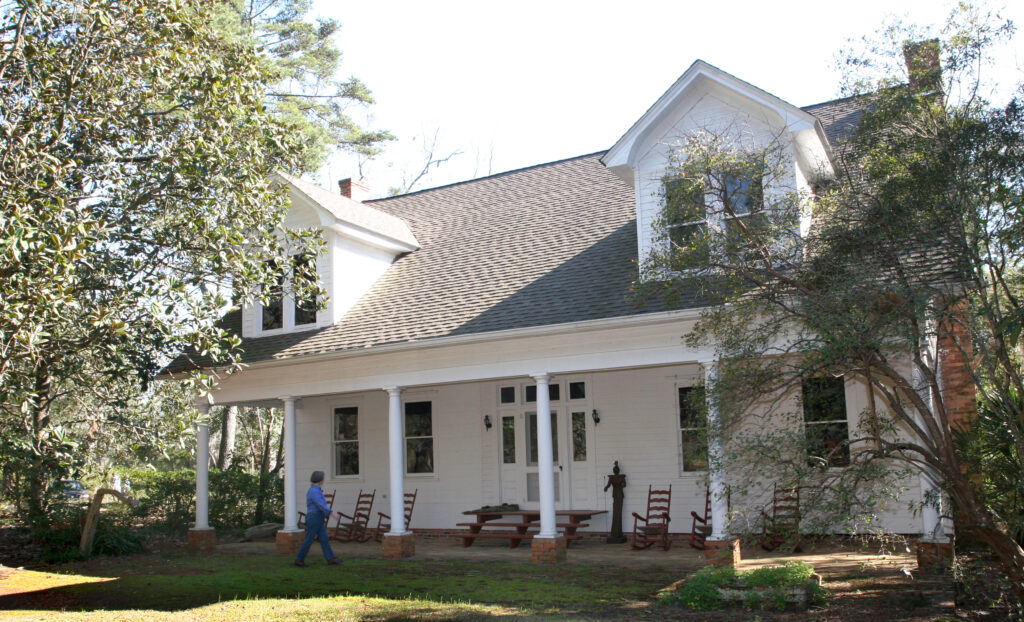
Photograph by Julius F. Ariail Jr.
A trained educator, botanist, and manager of prescribed burns, Betty Komarek established Birdsong as an educational training center for teachers and students in natural history and natural sciences. In 1986 Birdsong was incorporated as a nonprofit organization to offer public educational opportunities for the study of its biodiversity and land management. In addition to formal programs on the longleaf-pine ecosystem and informal opportunities for the occasional birder or hiker, Birdsong’s annual fall festival, which often includes music and art, attracts many visitors.
One of Birdsong’s most popular settings for birders is Betty Komarek’s bird window, which overlooks a well-maintained garden. From the old dining area of the Komarek home, visitors might see a variety of migrating and local birds through the large plate-glass window. Throughout the year visitors may see as many as 130 species of birds at the center’s window and on its grounds.

Photograph by Julius F. Ariail Jr.
Annually burned, the Gin House Field is one of Birdsong’s premier settings for a variety of seasonal wildflowers, including asters, dog fennel, goldenrod, and sunflowers. A healthy wetland, Big Bay Swamp is home to wood ducks, wood storks, alligators, turtles, snakes, frogs, and various mammals. Visitors may hike to the Listening Place, a screened structure that overlooks Big Bay Swamp and offers a secluded place for viewing wildlife.


